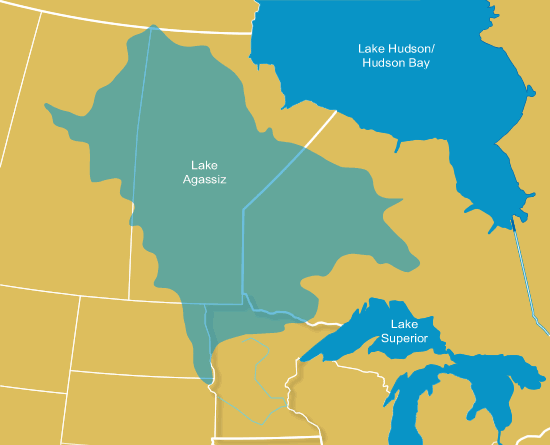The Big Freeze: Rapid Cooling During the Younger Dryas
About 12,000 years ago, after several thousand of years of ice age cold, the glaciers that covered large parts of North America and Eurasia were melting and temperatures were gradually warming.
But the cold returned in the Northern Hemisphere. This wasn’t just a short-term weather event, or even a seasonal change. It was cold for about 1,300 years. In some places the glaciers regrew and it was as cold as the peak of the Ice Age.
This time in Earth history is called the Younger Dryas. It was named after the vast quantities of pollen from tundra flower species, Dryas octopetala, found in sediment deposited at the time. It’s also called the Big Freeze for obvious reasons.
Why did climate cool during the Younger Dryas?
Scientists are not entirely certain about the cause or causes. However, many scientists hypothesize that a partial or total shutdown of the ocean’s thermohaline circulation led to the cooling.
As the vast ice sheets that covered much of North America began to melt at the end of the Ice Age, a huge lake formed from the meltwater in what is now central Canada. Today that lake no longer exists, but the sediment deposited on the bottom of the lake does. Scientists named it Lake Agassiz. Data from sediments, ice cores, and other sources helps us understand the story of what happened to the lake water and the climate. The freshwater in the lake first drained into rivers that led to the Mississippi, so it wound up in the Gulf of Mexico. But then, at the same time that the cooling began, there is evidence that lake started to drain into the North Atlantic instead. The influx of freshwater into the North Atlantic likely shut down the normal cycle of thermohaline circulation.
Without thermohaline circulation warm, tropical waters wouldn’t flow north towards the Arctic and cold, polar waters wouldn’t flow south towards the equator which could change climate in the Northern Hemisphere. Eventually, the flow from Lake Agassiz subsided, thermohaline circulation restarted, and climate warmed again.
Could it happen again?
Rapid melt of Arctic sea ice and the Greenland ice sheet are adding fresh water into the Atlantic. Would the melting ice provide enough fresh water to shut down or disrupt thermohaline circulation eventually? Nobody knows for sure. Most scientists agree that while there is low probability of this scenario, there would be very high consequences if it did happen. Some think that the story of the Big Freeze is a cautionary tale, reminding us that not all climate change is gradual, that a series of unlikely events can produce catastrophic change, and that climate warming can lead to freezing cold conditions because of the complexity of our planet.
